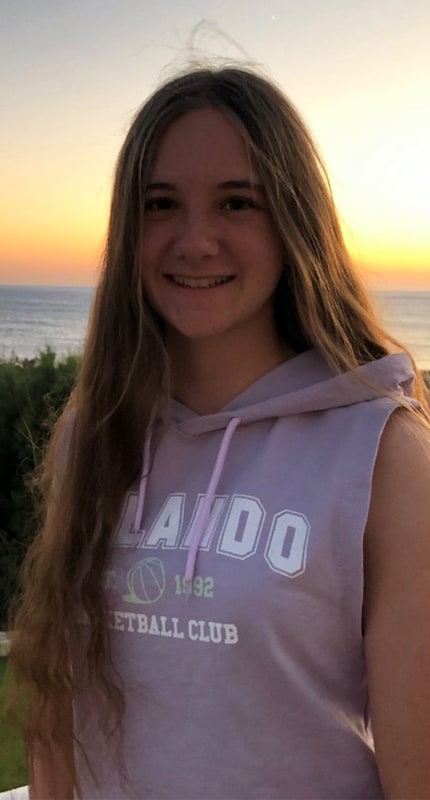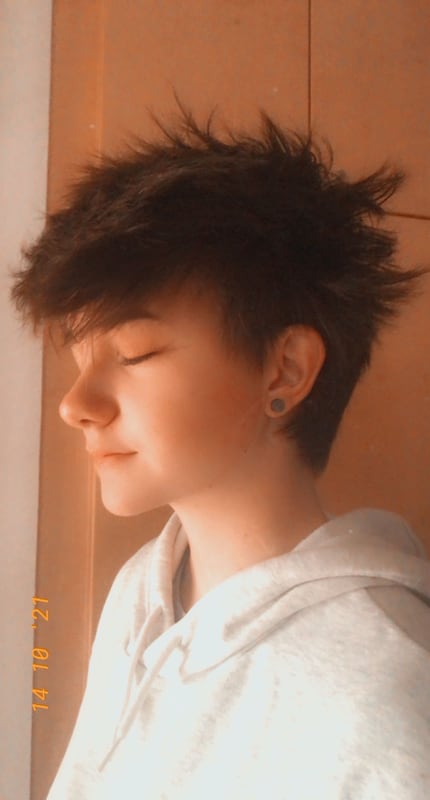
Background information
«Since becoming a mother…»
by Natalie Hemengül

Avis isn’t alone in her body. She has dissociative identity disorder. This means that Avis has several personalities. In an interview with her, I find out what this means for her everyday life.
«Who am I? And if so, how many?»: for Avis, this question is a reality. She was diagnosed with dissociative identity disorder, or DID, three years ago. A psychiatric condition in which the self has split into multiple personalities. All of them are different and they all live in her body. I want to know why this happened, what it means for her everyday life and how it feels to share body and mind with eleven other people. So I arranged to have a long conversation with the young Viennese woman via video call.
One of my first questions was whether I was actually talking to Avis at the moment – or whether another personality had emerged. Avis laughs and affirms it’s her. She admits, however, that Corrin, an alter, is in the background. We were already in the middle of the topic before my conversation partner could even introduce herself: «I’m Avis, 20 years old, and I’m from Vienna. Currently, I work in emergency services and study Spanish and inclusive education on the side for a teaching degree.» The difference between her and many other students: «I’m part of a DID system, which is dissociative identity disorder. And at the same time, the personality that fronts the most.» Fronting means being present and acting, that is, controlling the body. And because this is what Avis does for the most part, she is considered the so-called host of her DID and is also officially addressed by this name at work and university. But that doesn’t mean that Avis is present right now and responding.
The question that automatically arises: how many more are there? «So far, there have been 11 of us,» Avis explains. «Recently, however, we discovered a new alter (alternate identity).» This alter is an eight-year-old child. Her name is Ophelia. She introduces herself in a short video here:
It’s often the case that new people are discovered again and again and this is possible at any time, as I learn: «Alters can be added throughout a lifetime. You may also have alters that you don’t yet know exist.» This is because amnesia barriers, i.e. memory gaps, affect the disorder. And just as new alters can be added, old ones can disappear – or even merge. Then, from the combination of two or more personalities, a new one emerges.
It all sounds pretty complex! And a bit like her body is an apartment block. «That’s right,» confirms Avis:
«Basically, you can think of it as a big shared apartment in your head.»
Who is who? Here’s an overview of Avis’ DID system. She’s aware of the following personalities and their characteristics:
male, protector, gatekeeper, comes out in unpleasant or dangerous situations, very self-confident, humorous, likes to play games and loves skiing
male, little (about 3 years old) and trauma holder, rather shy, loves cuddly toys, likes to play hide-and-seek and to draw
female, protector, gatekeeper, quickly annoyed, very direct, rather pessimistic
female, little, (about 8 years old), very shy, likes painting and singing
male, caregiver, fronts rarely, only does so to settle disputes
female, caregiver, a bit chaotic, a little sunshine, likes fish a lot
What individual DID systems look like is unique. There are sufferers who have 200 different identities which are hard to keep track of. Not all identities have to be dominant everyday people, some may just hold certain trauma memories. Regardless of the amount of dissociation, the trigger for dissociative identity disorder is usually the same: physical, psychological, ritual, or sexual violence in childhood. This also happened to Avis – in a period before she was five years old. It’s a terrible fate that affects many more children than most of us are probably aware of: in Germany, for example, according to Police Crime Statistics 2022 (link in German), alone, each day 48 children were victims of sexual violence. Calculated over the entire year, that’s well over 17,000 cases. A shocking number. Many crimes remain undetected and aren’t even included in these statistics.
Although many people have to suffer abuse and maltreatment in childhood, there are few who have dissociative personality disorder. So what exactly leads to its development? «With DID, the trauma has to occur before the age of six and it has to be constant,» Avis tells me. «So the child really has to be backed into a corner, have no one to talk to and no way out, and by doing that, the brain creates helpers.» By separating and creating new personalities. The whole thing is a complex protective mechanism that’s set in motion:
«The brain decides that the trauma the child is experiencing is simply too much, and they can’t survive with it, so to speak. It switches to an absolute survival strategy and splits into several alters, each of which then knows only one part of the trauma.»
So the point of the DID is that the child will notice less of all this. Some alters know nothing at all about the trauma – instead, they’re completely shielded from the stressful memories. This is the case, for example, with the newly discovered Ophelia. The special thing about Ophelia is that she lives in 2010. According to Avis, it’s because she hasn’t fronted for so long, but has apparently been dormant deep inside. «For her, it’s like she closed her eyes for a second and all of a sudden she was in a completely different world, in a completely different looking body. Me and the other alters have to sort of gently teach her that the world she thinks she’s living in doesn’t actually exist like that anymore and time has passed.» Here’s where amnesia barriers come into play. Due to the many protective mechanisms and memory gaps that accompany this personality disorder, its actual onset, by the way, is usually not clearly determined. Avis also doesn’t know when she noticed the personalities for the very first time. However, the first two alters she can consciously remember are from her childhood. Their names were Lisa and Elisabeth. «Now they don’t exist anymore. I, Avis, am an amalgamation of Lisa and Elisabeth. I took some of their memories, but not all of them.»
What emerges during the rest of our conversation: regardless of the interplay of adult and child alters, Avis’ DID system is an equal one. This means there’s no hierarchy. No chief figure whose word carries more weight than that of the others. Instead, all personalities with their different ages, roles, and character traits exist on equal footing with each other:
«There’s no personality who’s above others. We decide everything as a collective.»
For example, the move to short hair was a democratic decision, as Avis recounts, «At the time, everyone had to at least say, 'It’s okay with me and I can deal with it'. But if one or the other had said, 'I feel terrible about it, I don’t want it. It triggers something in me that you’re maybe not aware of because you haven’t experienced it', then we would have decided against the hairstyle.» The fact that she takes into account the opinions and feelings of all alters also explains why Avis mostly uses the pronoun «we». In that case, she’s the messenger for the community.


Beside this, how else does this community get along? The dynamic between the individual alters is «quite normal,» as Avis explains with a slight smirk. Just like personalities that aren’t part of a DID system, there are friendships amongst them, but also people who don’t like each other very much. After all, we are talking about twelve individuals with very different character traits.
Want to know more about the alters living together and also find out why Avis speaks publicly about her personality disorder? Then follow me! The second part of the interview will be out in a few days.
Header image: Avis
Cat lady and coffee lover from up north. Always on the lookout for «News and Trends».
Interesting facts about products, behind-the-scenes looks at manufacturers and deep-dives on interesting people.
Show all